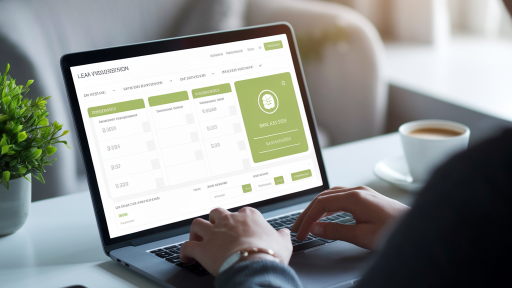Navigating the world of online lending can feel like a breath of fresh air. The convenience of applying for funds from your own home, often with quick decisions, has transformed how we access credit. Yet, this digital ease doesn’t mean the fundamental principles of lending have disappeared. Lenders, whether online or brick-and-mortar, are still in the business of managing risk.
Understanding what they’re looking for is the first and most crucial step toward a successful application. This guide serves as your comprehensive checklist, breaking down exactly what you need to qualify for an online loan. By preparing these items beforehand, you not only streamline the process but also significantly boost your chances of approval on favorable terms.
Understanding the Lender’s Perspective: What Are They Looking For?
Before we dive into the specific documents and numbers, it’s essential to get inside the lender’s head. When you submit an application, they are trying to answer one primary question: “If we lend this person money, how certain are we that they will pay it back on time and in full?” To answer this, they assess your financial profile through the lens of risk. They look for indicators of stability, responsibility, and capacity.
Most of their evaluation boils down to a few key areas: your identity, your ability to repay (income and existing debt), and your history of repaying past debts (credit history). Each piece of information you provide helps them build a picture of you as a borrower. A complete and strong profile signals low risk, which often translates to a higher approval chance and a lower interest rate.
The Essential Online Loan Qualification Checklist
Think of the application process as telling your financial story. The following checklist items are the chapters of that story. Having them ready will make the process smooth and efficient.
1. Personal Identification and Basic Information
This is the foundational step. Lenders must verify that you are who you say you are to prevent fraud and comply with federal regulations. This information is non-negotiable and typically the first thing you’ll be asked to provide.
- Full Legal Name: As it appears on your government-issued ID.
- Date of Birth: To confirm you are of legal age to enter into a contract.
- Social Security Number (SSN): This is crucial for pulling your credit report and verifying your identity.
- Government-Issued Photo ID: A clear copy of your driver’s license, passport, or state ID card.
- Proof of Address: A recent utility bill, bank statement, or lease agreement with your name and current address.
- Contact Information: A valid email address and a working phone number.
2. Proof of Stable and Verifiable Income
This is arguably the most critical part of your application. Lenders need concrete proof that you have a consistent flow of cash to cover the new loan payments. The key words here are “stable” and “verifiable.” They want to see a history of income, not just a one-time payment.
Depending on your employment status, the required documents will vary:
- For Salaried Employees: Recent pay stubs (usually the last two or three), your most recent W-2 form, and sometimes a letter of employment.
- For Self-Employed Individuals: The last two years of tax returns (including Schedule C), 1099 forms, and recent bank statements (three to six months) showing business income.
- For Other Income Sources: If you receive income from other sources like retirement, disability, or alimony, you’ll need documentation such as Social Security benefit statements, pension distribution statements, or court orders.
3. A Healthy Credit History and Score
Your credit score is a numerical snapshot of your creditworthiness. Online lenders rely heavily on this number to quickly assess risk. While some lenders specialize in loans for people with fair or poor credit, a higher score will always open the door to more options and better interest rates. It’s vital to know where you stand before you apply.
Lenders will look at both your score and your full credit report, focusing on:
- Payment History: Do you pay your bills on time? This is the most significant factor.
- Credit Utilization: How much of your available credit are you using? Lower is better (ideally below 30%).
- Length of Credit History: A longer history of responsible credit use is a positive sign.
- Recent Inquiries: Applying for a lot of credit in a short period can be a red flag.
Here’s a general breakdown of how lenders view credit scores:
| Credit Score Range | General Rating | Impact on Loan Approval |
|---|---|---|
| 800-850 | Exceptional | Highest chance of approval with the very best interest rates. |
| 740-799 | Very Good | Strong likelihood of approval and access to competitive rates. |
| 670-739 | Good | Generally considered a safe bet for approval, though rates may be slightly higher. |
| 580-669 | Fair | Approval is possible, especially with specialized lenders, but expect higher interest rates and fees. |
| 300-579 | Poor | Difficult to get approved for traditional unsecured loans; may need to look at secured options. |
4. Managing Your Debt-to-Income (DTI) Ratio
Your DTI ratio is a percentage that shows how much of your gross monthly income goes toward paying your total monthly debt obligations (rent/mortgage, auto loans, student loans, credit card minimums, etc.). Lenders use this metric to gauge your ability to handle a new monthly loan payment.
The formula is simple: DTI = (Total Monthly Debt Payments / Gross Monthly Income) x 100
For example, if your total monthly debts are $2,000 and your gross monthly income is $6,000, your DTI is 33.3%. Most lenders prefer a DTI ratio below 43%, with a ratio under 36% being considered ideal. A high DTI suggests you might be overextended financially, making you a riskier borrower.
5. Employment and Financial Stability
Beyond your income level, lenders want to see stability. A long history with the same employer indicates a reliable income source. Frequent job hopping can be a concern. They will likely ask for your employer’s name and contact information to verify your employment status.
Similarly, they will want to see your bank account information. This is not just to set up payments but also to review your banking history. They look for red flags like frequent overdrafts, non-sufficient funds (NSF) fees, or a consistently low or negative balance, as these can signal poor financial management.
Beyond the Basics: Factors That Can Strengthen Your Application
If you’re on the borderline for qualification or simply want the best possible terms, a few additional factors can tip the scales in your favor.
Having a Co-signer
A co-signer is someone with a strong financial profile (good income and credit) who agrees to be legally responsible for the loan if you default. This significantly reduces the lender’s risk and can help you get approved when you otherwise might not, or secure a much lower interest rate.
Offering Collateral (for Secured Loans)
While many online loans are unsecured, some lenders offer secured options. A secured loan is backed by an asset you own, such as a car or a savings account. If you fail to repay the loan, the lender can seize the collateral. Because this removes much of the risk for the lender, secured loans are often easier to qualify for and come with lower rates than unsecured loans.
Common Mistakes to Avoid When Applying for an Online Loan
Preparation isn’t just about gathering documents; it’s also about avoiding costly errors. Be mindful of these common pitfalls:
- Submitting Multiple Applications at Once: Each formal loan application typically results in a “hard inquiry” on your credit report, which can temporarily lower your credit score. Use pre-qualification tools that use soft inquiries first to shop for rates.
- Providing Inaccurate Information: Whether by accident or intentionally, false information on a loan application is fraud and will lead to an immediate denial. Double-check all numbers and details.
- Ignoring the Fine Print: Don’t just focus on the monthly payment. Understand the Annual Percentage Rate (APR), any origination fees, late payment penalties, and whether there’s a prepayment penalty.
- Not Checking Your Credit Report Beforehand: Errors on credit reports are common and can unfairly drag down your score. Review your report from all three major bureaus (Equifax, Experian, and TransUnion) and dispute any inaccuracies before you apply.
Your Pre-Application Action Plan
Feeling ready to move forward? Here is a final, actionable plan to put you in the strongest possible position before you click “submit.”
- Step 1: Check Your Credit Score & Report. Get a free copy of your report from the official sources and know your score.
- Step 2: Calculate Your DTI Ratio. Be honest with yourself about all your debts. If your DTI is high, consider paying down some debt before applying.
- Step 3: Gather All Necessary Documents. Create a digital folder with scans or PDFs of your ID, pay stubs, bank statements, and tax returns so everything is in one place.
- Step 4: Determine Exactly How Much You Need. Don’t borrow more than you need. A smaller loan is often easier to get approved for and cheaper to repay.
- Step 5: Research and Compare Lenders. Look for lenders that cater to borrowers with your credit profile. Read reviews and compare their typical APRs and fees.
Securing an online loan is an achievable goal when you approach it with diligence and preparation. By understanding what lenders are looking for and ensuring your financial profile is presented clearly and accurately, you empower yourself to navigate the process with confidence. This checklist is your roadmap to not only getting approved but also securing a loan that serves your financial needs responsibly. For more detailed guidance, you can review official resources that explain what you need to qualify for an online loan and protect yourself as a consumer.




